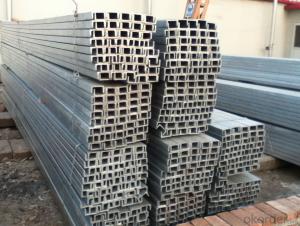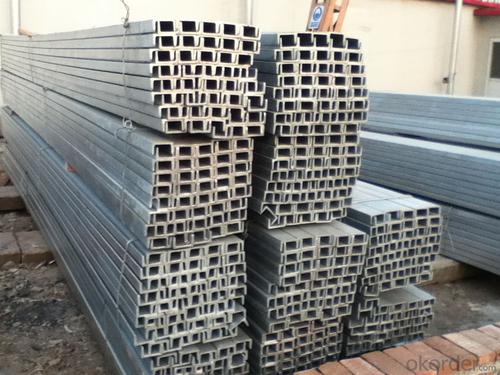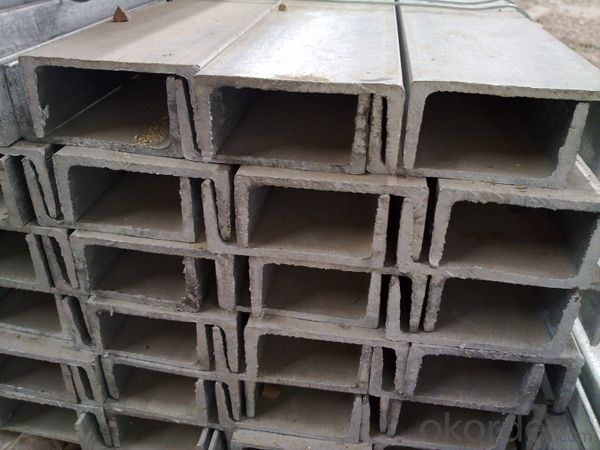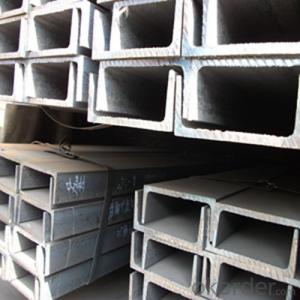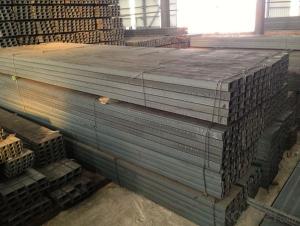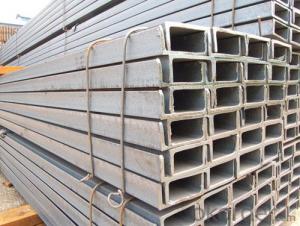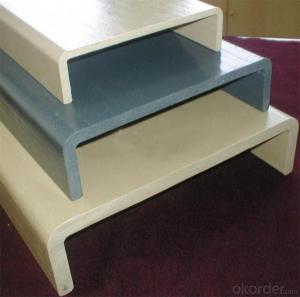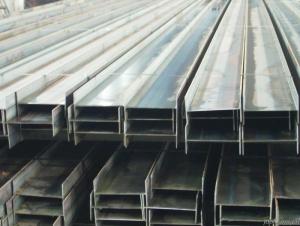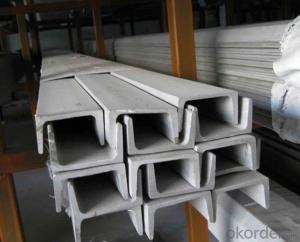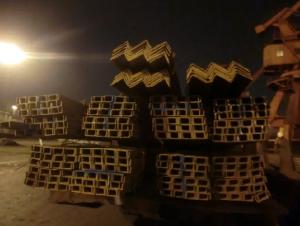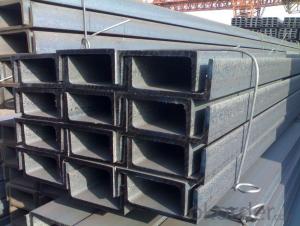UPN JIS U CHANNEL GB U CHANNEL 50MM-300MM
- Loading Port:
- Tianjin
- Payment Terms:
- TT OR LC
- Min Order Qty:
- 25 m.t.
- Supply Capability:
- 20000 m.t./month
OKorder Service Pledge
OKorder Financial Service
You Might Also Like
Product Description:
OKorder is offering UPN JIS U CHANNEL GB U CHANNEL 50MM-300MM at great prices with worldwide shipping. Our supplier is a world-class manufacturer of steel, with our products utilized the world over. OKorder annually supplies products to European, North American and Asian markets. We provide quotations within 24 hours of receiving an inquiry and guarantee competitive prices.
Product Applications:
According to the needs of different structures,UPN JIS U CHANNEL GB U CHANNEL 50MM-300MM can compose to different force support component, and also can be the connections between components. It is widely used in various building structures and engineering structures such as roof beams, bridges, transmission towers, hoisting machinery and transport machinery, ships, industrial furnaces, reaction tower, container frame and warehouse etc
Product Advantages:
OKorder's UPN JIS U CHANNEL GB U CHANNEL 50MM-300MM are durable, strong, and resist corrosion.
Main Product Features:
· Premium quality
· Prompt delivery & seaworthy packing (30 days after receiving deposit)
· Corrosion resistance
· Can be recycled and reused
· Mill test certification
· Professional Service
· Competitive pricing
Product Specifications:
Manufacture: Hot rolled
Grade: Q195 – 235
Certificates: ISO, SGS, BV, CIQ
Length: 6m – 12m, as per customer request
Packaging: Export packing, nude packing, bundled
Sizes: 25mm-250mm | ||||||||||||
a*t | ||||||||||||
25*2.5-4.0 | 70*6.0-9.0 | 130*9.0-15 | ||||||||||
30*2.5-6.6 | 75*6.0-9.0 | 140*10-14 | ||||||||||
36*3.0-5.0 | 80*5.0-10 | 150*10-20 | ||||||||||
38*2.3-6.0 | 90*7.0-10 | 160*10-16 | ||||||||||
40*3.0-5.0 | 100*6.0-12 | 175*12-15 | ||||||||||
45*4.0-6.0 | 110*8.0-10 | 180*12-18 | ||||||||||
50*4.0-6.0 | 120*6.0-15 | 200*14-25 | ||||||||||
FAQ:
Q1: Why buy Materials & Equipment from OKorder.com?
A1: All products offered byOKorder.com are carefully selected from China's most reliable manufacturing enterprises. Through its ISO certifications, OKorder.com adheres to the highest standards and a commitment to supply chain safety and customer satisfaction.
Q2: How do we guarantee the quality of our products?
A2: We have established an advanced quality management system which conducts strict quality tests at every step, from raw materials to the final product. At the same time, we provide extensive follow-up service assurances as required.
Q3: Can stainless steel rust?
A3: Stainless does not "rust" as you think of regular steel rusting with a red oxide on the surface that flakes off. If you see red rust it is probably due to some iron particles that have contaminated the surface of the stainless steel and it is these iron particles that are rusting. Look at the source of the rusting and see if you can remove it from the surface.
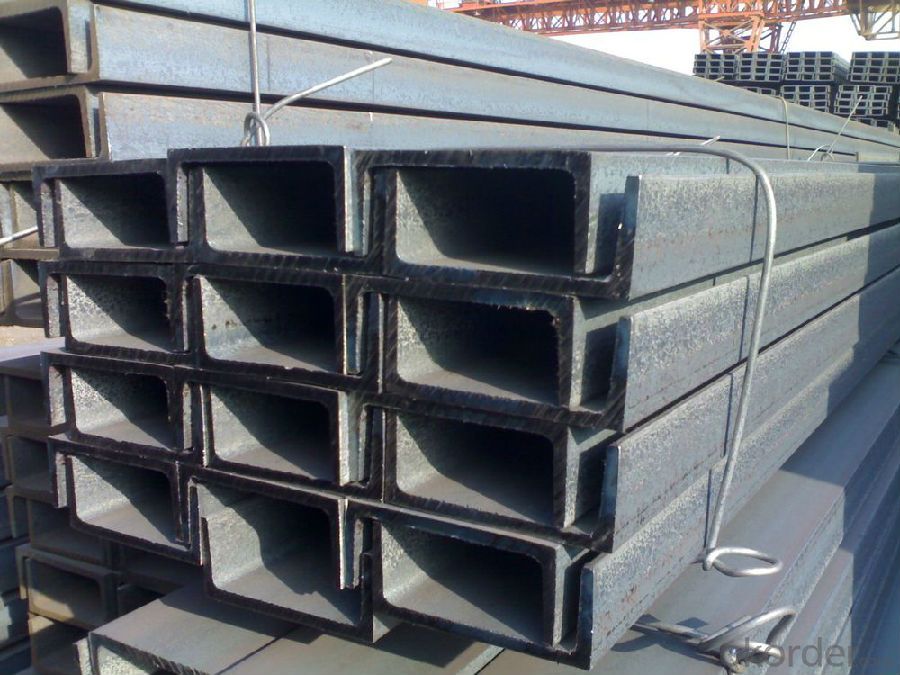
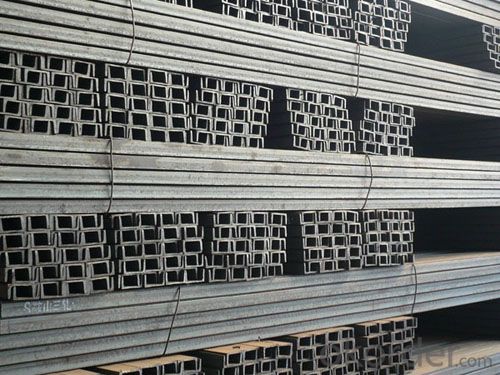
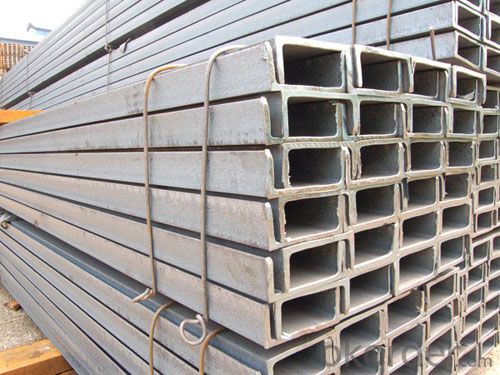
- Q: What are the different grades of steel used in channels?
- The different grades of steel used in channels can vary depending on the specific application and requirements. However, some commonly used grades include A36, A572, and A588. A36 steel is a low carbon steel that is commonly used in construction and structural applications. It has good weldability and machinability, making it suitable for various channels used in building projects. A572 steel is a high-strength, low-alloy steel that is often used in structural applications such as bridges, buildings, and machinery. It offers better strength and toughness compared to A36 steel, making it suitable for heavy-duty channels that require higher load-bearing capacity. A588 steel, also known as weathering steel, is a high-strength, low-alloy steel that is designed to withstand atmospheric corrosion. It is commonly used in outdoor applications such as bridges, buildings, and infrastructure. A588 channels are often used in coastal or harsh environmental conditions where corrosion resistance is crucial. Other grades of steel used in channels may include A992, A500, and A709, among others. Each grade has its own specific properties and characteristics, making it suitable for different types of channels based on the intended use and environmental factors.
- Q: What are the factors to consider when determining the spacing of steel channels in a structure?
- When determining the spacing of steel channels in a structure, there are several factors that need to be considered. These factors include the load requirements of the structure, the span length of the channels, the material properties of the steel, and the desired deflection limits. Additionally, factors such as construction techniques, available resources, and cost considerations also play a role in determining the spacing of steel channels in a structure.
- Q: Are steel channels suitable for indoor recreational facilities?
- Yes, steel channels are suitable for indoor recreational facilities due to their strength, durability, and versatility. They can be used for constructing various structures such as support beams, frames, and partitions, providing stability and safety. Additionally, steel channels are resistant to moisture, corrosion, and fire, making them a reliable choice for recreational facilities.
- Q: What are the common loadings considered in the design of steel channels?
- The common loadings considered in the design of steel channels include dead loads, live loads, wind loads, seismic loads, and impact loads. Dead loads are the permanent loads that the channel will support, such as the weight of the structure itself and any fixed equipment. Live loads are temporary loads that the channel will experience, such as the weight of people, furniture, or vehicles. Wind loads consider the force exerted by wind on the structure, which can vary based on the location and the design wind speed. Seismic loads account for the potential ground motion during an earthquake. Impact loads take into account any sudden or dynamic loads that may occur, such as a collision or a heavy object being dropped on the channel.
- Q: What are the different installation techniques for steel channels?
- There are several installation techniques for steel channels, including welding, bolting, and using adhesive or epoxy. Welding involves fusing the channel to the desired surface using heat, creating a strong and permanent bond. Bolting involves using screws or bolts to attach the channel to the surface, allowing for easy removal or adjustment if needed. Adhesive or epoxy can also be used to bond the channel to the surface, providing a strong and durable connection. The choice of installation technique depends on the specific requirements of the project and the desired level of permanence.
- Q: What are the different methods for protecting steel channels from chemical exposure?
- There are several methods available for protecting steel channels from chemical exposure. These methods aim to prevent corrosion and deterioration of the steel, ensuring its longevity and structural integrity. Some of the common methods include: 1. Coatings: Applying protective coatings on the steel channels is an effective way to safeguard them from chemical exposure. Various types of coatings such as epoxy, polyurethane, and zinc-rich coatings can be used. These coatings act as a barrier between the steel and the corrosive chemicals, preventing direct contact and potential damage. 2. Galvanizing: Galvanizing involves coating the steel channels with a layer of zinc. This process creates a protective barrier that prevents chemical substances from reaching the steel surface. It is often used in environments where the steel channels are exposed to harsh chemicals or corrosive elements. 3. Plastic encapsulation: Another method to protect steel channels from chemical exposure is by using plastic encapsulation. This involves wrapping the steel channels with a plastic coating or sheath. The plastic acts as a barrier, shielding the steel from direct contact with chemicals and preventing corrosion. 4. Alloying: Alloying is a technique where steel is mixed with other metals or elements to enhance its resistance to chemical exposure. By adding specific alloying elements such as chromium, nickel, or molybdenum, the steel channels can become more resistant to corrosion and chemical attack. This method is commonly used in industries where steel channels are exposed to aggressive chemicals. 5. Cathodic protection: Cathodic protection is a method that involves using sacrificial anodes or impressed current to protect steel channels from corrosion. This technique creates an electrochemical reaction that prevents the steel from corroding. It is particularly useful in environments where the steel channels are submerged in water or come into contact with corrosive liquids. 6. Proper maintenance: Regular maintenance is crucial for protecting steel channels from chemical exposure. This includes cleaning any chemical spills or residues promptly, inspecting the channels for signs of corrosion, and applying protective coatings as needed. Maintaining a clean and dry environment around the steel channels can also help minimize the risk of chemical damage. It is important to consider the specific requirements of the environment and the type of chemicals the steel channels will be exposed to when choosing a protection method. Consulting with experts or professionals in the field can help determine the most suitable method for ensuring the long-term protection of steel channels from chemical exposure.
- Q: How do steel channels contribute to load distribution?
- Steel channels contribute to load distribution by providing structural support and distributing the weight of the load evenly across the channel's length. These channels help to minimize stress concentrations and ensure that the load is evenly distributed to prevent any localized areas from bearing excessive weight.
- Q: How to input the sign of channel steel in Excel
- The same height of the channel, if there are several different leg width and waist thickness, also need to add a, B, C on the right side of the model to distinguish, such as 25#a, 25#b, 25#c and so on.
- Q: Can steel channels be used for framing in construction?
- Yes, steel channels can be used for framing in construction. Steel channels, also known as C-channels or U-channels, are commonly used in construction as structural components for framing applications. They provide excellent strength and stability, making them suitable for various construction projects. Steel channels offer several advantages, such as high load-bearing capacity, durability, and resistance to fire, rot, and pests. They can be easily integrated into different construction systems and are often used in commercial buildings, industrial structures, and residential homes. Additionally, steel channels are available in various sizes and thicknesses, allowing for versatility in design and construction.
- Q: What are the safety considerations when working with steel channels?
- When working with steel channels, it is necessary to consider several safety factors. To begin with, it is crucial to wear the appropriate personal protective equipment (PPE) such as safety glasses, gloves, and steel-toed boots. This will help safeguard against potential hazards like sharp edges, flying debris, and falling objects. Furthermore, it is vital to inspect the steel channels for any defects or damage before commencing work. This involves checking for cracks, bends, or corrosion that could jeopardize the structural integrity of the channels. If any issues are detected, they should be rectified or the channels should be replaced to maintain a safe working environment. Proper lifting techniques and equipment should be employed when handling steel channels to prevent strain or injury. Since steel channels can be heavy and cumbersome to maneuver, using lifting aids like cranes, hoists, or forklifts can significantly reduce the risk of accidents or musculoskeletal injuries. Another safety consideration is ensuring the proper storage and stacking of steel channels. They should be stored in a designated area that is free from obstructions and away from other materials that may pose a risk of falling or causing damage. Stacking should be done securely and stably, with heavier or larger channels placed at the bottom to prevent toppling. When cutting or welding steel channels, it is important to adhere to proper safety procedures. This includes using the appropriate tools and equipment, ensuring adequate ventilation in enclosed spaces to prevent the accumulation of toxic fumes or gases, and wearing respiratory protection if necessary. Fire prevention measures, such as keeping fire extinguishers nearby and keeping flammable materials away from the work area, should also be implemented. Lastly, clear communication and coordination among workers are essential when working with steel channels. This can help prevent accidents, ensure awareness of potential hazards or risks, and facilitate prompt response in case of emergencies. By following these safety considerations when working with steel channels, the risk of accidents, injuries, and property damage can be minimized, creating a safer work environment for everyone involved.
Send your message to us
UPN JIS U CHANNEL GB U CHANNEL 50MM-300MM
- Loading Port:
- Tianjin
- Payment Terms:
- TT OR LC
- Min Order Qty:
- 25 m.t.
- Supply Capability:
- 20000 m.t./month
OKorder Service Pledge
OKorder Financial Service
Similar products
Hot products
Hot Searches
Related keywords
